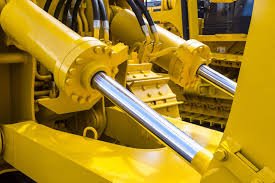Hydraulics:

Worldwide, hydraulics constitute a $45-50 billion market and is growing steadily.
- A hydraulics system is based on the simple principle of Pascal’s law, named for the 17th century French scientist Blaise Pascal.
- The law states that when pressure is applied to an incompressible fluid, it is transmitted equally in all directions throughout the fluid. (Pressure here is simply the amount of force per unit area).
- In a hydraulic system, pressure is created by applying force to a fluid. And because it is subsequently transmitted equally in all directions, a small force applied over a small area can create a much larger force over a larger area.
- A small force applied at one end can be used to generate a much larger force at the other end just by having a larger area of contact.
- There’s no need to change the pressure.
- This is perhaps the simplest use of hydraulics.
- There are many more actions that a hydraulic system can perform than just lifting.
- Parts of a hydraulic system: Pumps, Pipes, Valves, Linear actuators or rotary actuators, Tank (with filters) and Sensors or switches
- They can be used for both mobile equipment — cranes, excavators, etc. which move on wheels or tracks — and static applications such as a hydraulic press, moulding machines, windmills,
- They are equipped with sensors to track movement, temperature, pressure, flow, oil contamination
- Advantages of Hydraulics
- Hydraulics have many advantages over mechanical methods of transmitting energy.
- The principal ones are smooth movements, high power to weight ratio, better heat dissipation, smooth controls, and higher precision.




